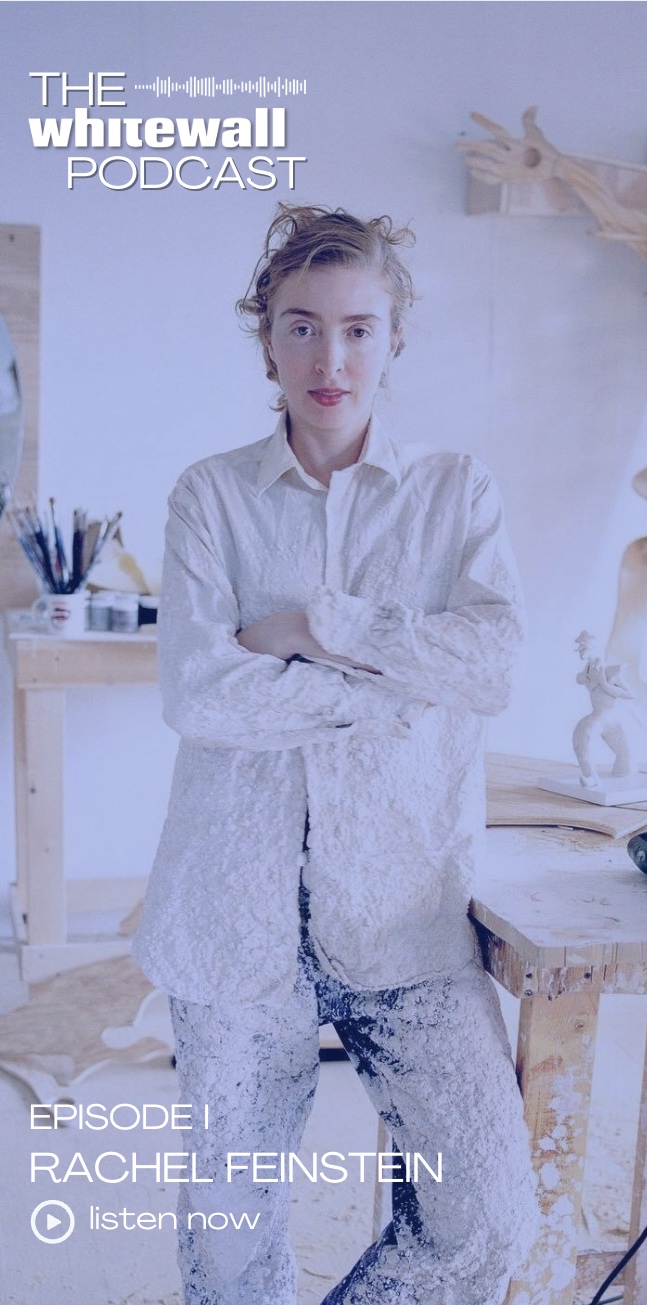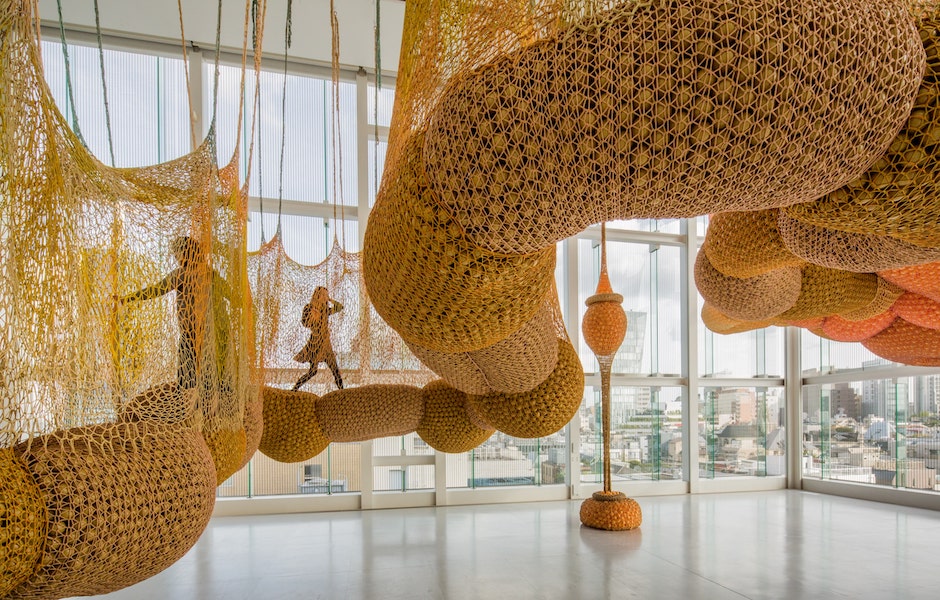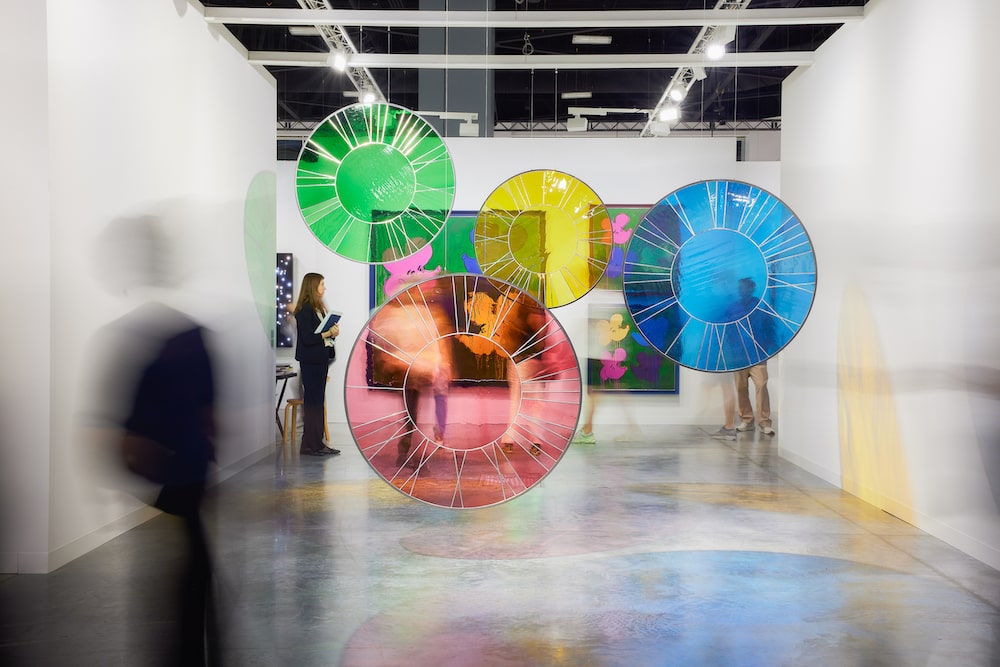Whitewall’s winter 2013 Luxury Issue includes a feature on Argentine developer and collector Alan Faena. Our trip to Buenos Aires in September offered so much to photograph – the Arts District, the collection, the Art Center, and Faena’s summer home. We weren’t able to include it all in print so we’ve created a slideshow here along with an excerpt of the introduction to the interview.
—
We had been in the air for almost two hours, flying over small towns, farms with bright patches of alfalfa, and sprawling estates. It was windy that day, and we were relieved when the helicopter started to slow down and circle the campo. As we came in for a landing, a vineyard, the long pool of a fountain, manicured shrubbery, and a grand ranch swirled into view. The helicopter landed and we emerged, smelling the crisp spring Argentine air. Alan Faena stepped out, dressed in his signature all-white button down shirt, linen pants, and white hat. We were also greeted by two white greyhounds (two of more than twenty, we learned, that live on the property). Faena’s newly renovated cream-colored summer home, his campo, glowed in the early afternoon. A row of trees led to the experimental vineyard beyond, while another led to the farmland, and yet another to where chickens and horses were kept. In the shade at the back of the house, a barbecue had already been going and sausages were ready for us to eat upon landing. Post-snack, Faena led us inside and showed us the many rooms decorated in almost entirely 18th-century furniture, which he picked out himself. A fire was burning in the main fireplace and as the champagne was popped, 17th-century music began to play around the house. We looked at each other with wide eyes. Where were we? Who was this guy? We were completed transported. We had drunk the Kool-Aid and wanted more.
This was an experience completely designed by Alan Faena, a man known in Argentina during the 1980s and ’90s as the head of the ubiquitous fashion brand Via Vai, which he founded at the age of 20. After years of incredible success in the fashion industry, he took a long sabbatical on the beaches of Punta del Este, Uruguay. A few years later, he came back to Buenos Aires with a plan: to create the Faena Art District in an abandoned industrial part of the city, Puerto Madero, so deserted there weren’t any streets.
It started with the opening of Faena Hotel+Universe in 2004, which he designed in collaboration with Philippe Starck in the century-old El Porteno Building constructed with imported bricks from Manchester, England. Two residences followed, La Portena I and La Portena II. The Faena Art Center, a unique space that invites international artists such as Ernesto Neto, Los Carpinteros, and Franz Ackermann to create monumental, site-specific works, opened in 2011. The Faena Prize for the Arts and an artists’ residency has followed. And the Aleph Residences, designed by Sir Norman Foster — his first project in South America — opens this year.
Since the hotel opened just eight years ago, the Puerto Madero Waterfront has been completely transformed. While visiting this September, we had a hard time imagining the El Porteno building standing alone with no streets to connect it to the rest of Buenos Aires (we were shown pictures to prove it). A whole mini-city has been built up around the arts district. Faena is responsible for creating an entirely new, thriving, and wildly popular neighborhood in Buenos Aires.
During our stay, we found out that Faena has plans beyond Argentina that are already under way. This December, as art enthusiasts flock to Miami for Art Basel Miami Beach and its surrounding fairs and events, they’ll notice construction has already begun on another residence Foster designed for Faena. It’s the first part of Faena Miami, located on the site of the landmarked Saxony, which will also boast a hotel and a cultural space designed by Rem Koolhaas.
A couple of days before the helicopter ride out to the campo, we sat down with Faena at his suite in the Faena Hotel+Universe. Art, ephemera, books, souvenirs from his travels, and photographs surrounded us. Completely different in feel from his country home, this is Faena’s take on city living. Seated in low chairs at a heavy, wood coffee table, we talked over tea by candlelight about Faena’s vision for a utopian urban community in Buenos Aires. Faena told us about creating a place where culture — art, music, food, lifestyle, and design — blend effortlessly. Behind him a window framed the Argentine sun setting over Puerto Madero. We found ourselves in yet another Faena-designed moment. When he told us about how each object in the room was more a solidification of a memory or experience than just a new piece for his walls, we understood. This guy was good. Watch out, Miami.
Photographs by Steve Benisty











